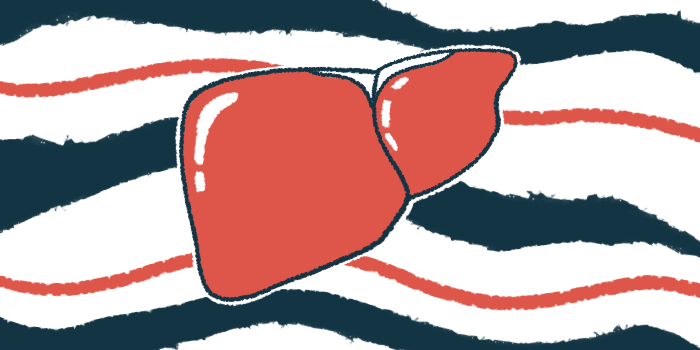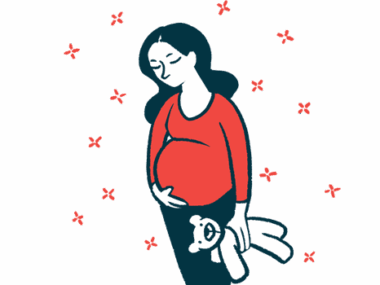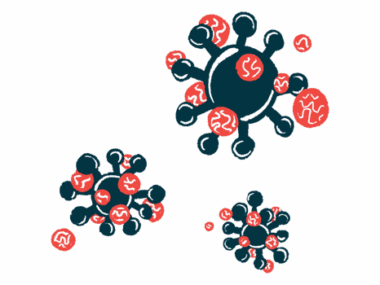Baby with rare PFIC type thrives after liver transplant: Case study
6-month-old becomes youngest PFIC8 patient to receive transplant
Written by |

A living donor liver transplant successfully managed liver failure in a 6-month-old boy with progressive familial intrahepatic cholestasis type 8 (PFIC8) that was unresponsive to standard treatment, researchers said.
“This case marks the youngest [PFIC8 patient] necessitating a liver transplant to date,” the researchers wrote. “Favorable outcomes post liver transplant stress the importance of early genetic testing and referral to liver transplant centers for unresponsive patients, potentially saving lives.”
The case study, “Youngest Living Donor Liver Transplant for End-Stage Liver Disease in a 6-Month-Old With a Novel Aggressive Mutation in KIF12 Gene,” was published in the journal Pediatric Transplantation.
PFIC is a group of genetic forms of cholestasis, a condition marked by slowed or stalled flow of bile, a digestive fluid, between the liver and the intestines.
This can lead to the bile buildup in the liver, resulting in progressive damage, and bile leakage into the bloodstream, causing symptoms such as itchy skin, or pruritus, and jaundice, or yellowing of the skin and white parts of the eyes.
Extremely rare condition
In PFIC, cholestasis is caused by mutations in genes involved in the production and/or secretion of bile by liver cells, typically resulting in symptoms in early childhood. Left unmanaged, the disease is associated with a high risk of liver failure and death.
PFIC8, a rare type of PFIC, is caused by mutations in the KIF12 gene, which provides instructions for a protein involved in maintaining cell structure and organization, as well as transporting molecules inside liver cells.
The first PFIC8 case was reported in 2019, and fewer than two dozen cases have been reported so far.
Here, researchers in India described the case of a 6-month-old boy, born of blood-related parents, who had experienced jaundice since he was 2 months old.
He showed progressive accumulation of fluid within the abdomen — which can occur due to cholestasis or other causes — and at 4 months needed a procedure to drain the excessive liquid. He also had pruritus that had significantly affected his sleep since he was 4 months old, and he experienced recurrent fever spikes without signs of infection.
Physical examination showed his growth was severely delayed. His liver was enlarged, and he had several abdominal hernias, or protrusion of intestines through the abdominal muscle wall.
Lab tests revealed signs of liver injury, including elevated levels of the liver enzymes alanine aminotransferase (ALT), aspartate aminotransferase (AST), and gamma-glutamyl transpeptidase (GGT).
Given that high GGT levels indicate damage in the liver or the bile ducts, the tubes that carry bile in and out of the liver, the researchers considered several infant-onset diseases marked by such readings.
These included biliary atresia, a condition marked by blocked or absent bile ducts; Alagille syndrome, a genetic disease that causes bile duct problems and other hallmark features outside the liver; and PFIC3, a type of PFIC that is typically associated with high GGT.
Abdominal imaging found signs of chronic liver disease, but no evidence of blocked or abnormal bile ducts, ruling out biliary atresia. There were no additional signs of Alagille outside the liver.
As clinical and laboratory findings strongly suggested a hereditary cause, the boy underwent genetic testing. A mutation was found in both copies of the KIF12 genes, one inherited from each parent, confirming a PFIC8 diagnosis.
The baby was treated with ursodeoxycholic acid (UDCA), a mainstay therapy for many forms of cholestasis that can help promote bile flow and is sold under the brand names Urso and Actigall. He was also given medicines to dampen his itch, as well as nutritional therapy.
However, his jaundice and pruritus persisted, as did the continued fluid buildup in his belly, indicating an “inadequate response to UDCA therapy,” the researchers wrote.
This prompted the team to consider a living donor liver transplant as a definitive treatment. A piece of liver from a living donor was transplanted into the infant boy. His hernias were repaired during the procedure.
To reduce the risk of organ rejection, he was given immunosuppression therapy starting the day after surgery.
He was discharged 47 days after the transplant, with stable blood pressure and heart rate, as well as normal function of the transplanted liver. Normal liver function was maintained at the one-year follow-up, “indicating successful posttransplant recovery,” the team wrote. At that latest follow-up, the boy had also grown and “demonstrated thriving well-being,” they said.
“KIF12-related genetic disease should be considered in neonatal cholestasis cases with high [GGT] to differentiate from conditions like biliary atresia,” the researchers wrote. Early diagnosis using genetic testing along with “prompt referral of these patients who remained unresponsive to conservative management to a liver transplant center could be life-saving,” they added.







